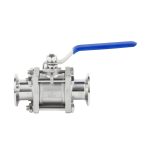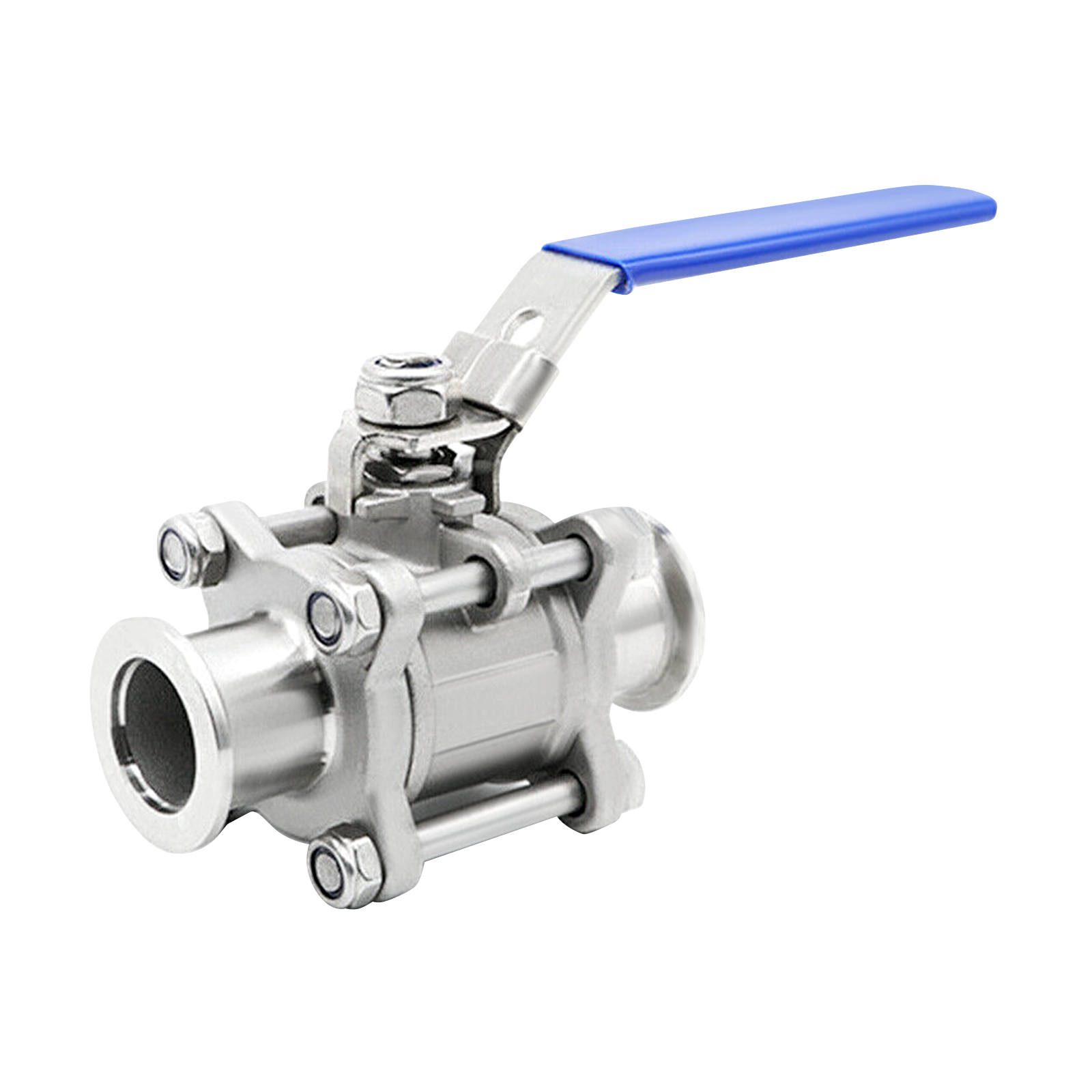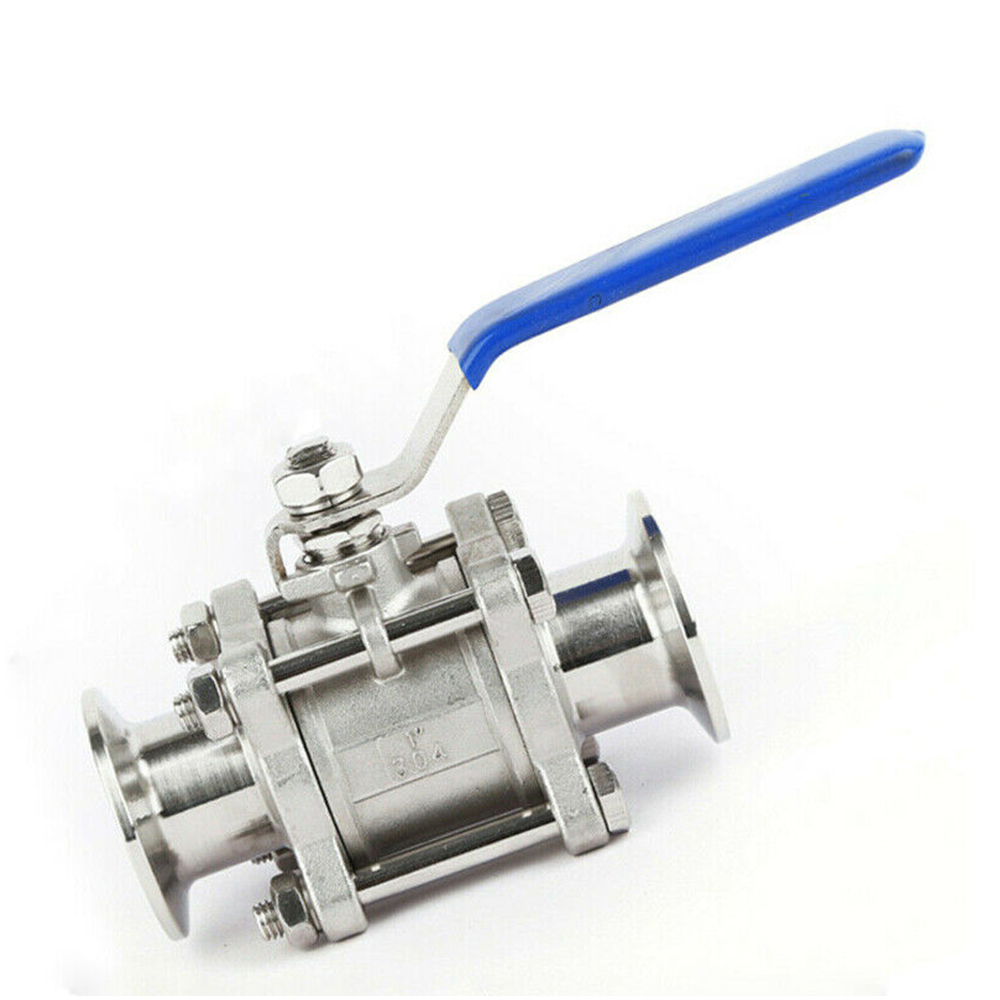
Design of Vacuum Valve
The vacuum valve is an important component of the vacuum system. For a valve that forms a part of the pipeline, its conductance is an important performance parameter. For valves that are mainly used to switch the gas circuit, the sealing performance of the valve plate is also one of the important performance parameters. The sealing performance is measured by its air leakage rate. For the valve that is mainly used to adjust the size of the air flow, the accuracy and range of the air flow can be adjusted, which is an important performance parameter. For the all-metal ultra-high vacuum valve, is the performance stable every time it is closed? Is the service life long? is its main performance index.
(1) General requirements for vacuum valves
①The sealing performance of the valve should be good, and the leakage rate of the valve plate seal should be small;
②After the valve plate is opened, there should be as large a conductance as possible;
③The materials used in the valve should have low saturated vapor pressure, high corrosion resistance and high chemical stability, wear resistance, and long life. The ultra-high vacuum valve should be able to withstand baking (400~450℃);
④The valve structure should be simple, the switch is light and labor-saving, there is a mark, and the transmission mechanism is on the high pressure side;
⑤The type, basic parameters, connection dimensions and technical conditions of the vacuum valve should be implemented in accordance with national professional standards.
(2) The sealing structure and sealing force calculation of the valve plate
①Calculation of rubber gasket sealing structure and sealing force
The rubber gasket seal is a seal realized by pressing the rubber gasket between the valve plate and the valve seat, and relying on rubber elastic deformation to fill the uneven surface. There are currently 6 types of rubber gasket seals for vacuum valves, as shown in Figure 18. The first 4 types are used for larger diameter valves, and the latter 2 types are used for smaller diameter valves. Type a is a structure adopted early. In order to facilitate the processing of the sealing groove on the valve seat, the valve seat and the valve housing must be designed to be detachable, which adds a vacuum seal to the structure. At present, most valves adopt a structure with a sealing ring on the valve plate, as shown in (b), (c), and d) in the figure.
newmaker.com
Pay attention to the following points when selecting the sealing structure of the vacuum valve: a. Minimize the outgassing factor on the high vacuum side under the valve plate as much as possible, such as choosing gasket materials with a small outgassing rate. b. After closing the valve, the seal ring section has the largest compression deformation. c. Strive to be simple in structure; d. Easy to manufacture; e. The sealing element is easy to disassemble and repair.
The sealing performance of the valve is determined by the degree of the uneven surface of the valve seat filled with the gasket. There are two factors that affect the degree of packing: a. The hardness and compression of the gasket material; b. The roughness of the valve seat surface. Usually the surface roughness of the valve seat is higher than 3.2/Δ, and the hardness of the gasket is between 55 and 75 Shore hardness. The compression degree of the gasket, according to the test results, when the hardness of the rubber is above 50 Shore hardness, and there is no scratch on the surface, the high compression ratio of the rubber gasket can reach an air leakage rate of less than 1.33 when the compression ratio is above 15%. ×10-7Pa·L/s·cFn. The sealing performance. If considering the allowable deviation in manufacturing accuracy, it is necessary to increase the compression ratio appropriately. Therefore, it is recommended that the relative compression ratio of the vacuum valve gasket is usually 15% to 25%.
The calculation of the sealing force of the gasket seal bore plate, most of which can be approximated according to the sealing force of the O-ring compressed in the rectangular groove
Fs=σBL =σxEBxπdDN (1)
In the formula, σ-seal specific pressure, N/cm2; B-seal width, that is, the contact width between the sealing ring and the valve seat, cm; L-the average circumference of the sealing ring, cm; σx-relative pressure; E-seal material The phase modulus, N/cm2; Bx- the relative width of the sealing ring, d- the diameter of the sealing ring, cm; D- the middle diameter of the sealing groove, cm.
Some valves only need one-way use, such as the inlet valve of the diffusion pump, and the valve plate only needs to seal the vacuum state in the diffusion pump. The design of this valve structure allows the valve plate to continue to be compressed under the action of the pressure difference. Therefore, only the initial pressing force is required when the valve plate is closed. In the joint design of vacuum valve in my country in 1968, it was proposed that under the above circumstances, the initial specific pressure of the seal can be taken as 20N/cm. . Practice has proved that this approach is feasible. Therefore, the initial sealing force of this valve is
Fs=20BLN (2)
Where B- the sealing width of the rubber gasket corresponding to the sealing specific pressure of 20N/cm2, cm; L- the length of the rubber gasket, cm.
Some valves need to be used in both directions, not only need to seal the atmospheric pressure above the valve plate, sometimes also need to seal the atmospheric pressure below the valve plate. The valve plate sealing force of this valve should be calculated by the following formula:
Fs=σBL+7.85×10-5D2PdN (3)
In the formula, Pd is atmospheric pressure, Pa; other symbols are the same as before.
②Metal gasket sealing structure and sealing force calculation
Figure 19 shows several structures of metal gasket seal. Figure (a) is the structure of the needle valve. Figures (b), (c), (d) and (e) are all metal gasket seal valves used in ultra-high vacuum systems.
Generally speaking, the valve plate is made of soft metal copper, oxygen-free copper, aluminum, nickel and lead, etc. The copper, aluminum, and nickel must be pre-annealed. The valve seat is made of hard metal stainless steel into a knife-edge shape. Figures (f), (g) and (h) use low melting point soft metals and their alloys as sealing materials, and the valve seat is also made of hard metal stainless steel. They all rely on the plastic deformation of the soft metal under pressure to tightly seal with the valve seat. In order to ensure sealing, the indentation of the knife edge must coincide each time the valve plate is closed. For this reason, in addition to the precise guiding mechanism on the drive of the valve plate, the knife tip should also be rounded. As shown in Figure 20, there are generally two rounding radii: R0.1mm and R0.2mm, most of which are R0.1. There is no knife edge indentation problem, and the life of the gasket is longer.
The shape of the knife edge also has a certain influence on the performance of the valve. A right-angled knife edge requires a larger screw pressing torque than an angled knife edge.
Note: Leak rate measurement is limited by the sensitivity of the instrument, the measured value is the upper limit, not the actual specific value
In order to improve the life of the valve plate (or metal gasket), the pressing amount of the valve plate can also be designed to be finely adjustable. Once the original indentation loses its proper sealing performance, fine-tuning can be used to make the indentation deeper. In this way, the sealing performance can be ensured and the service life of the valve plate can be prolonged.
At present, the calculation of the sealing force of metal gasket seal valves is usually based on experimental data. The designer conducts a simulation test for the designed sealing structure to determine the specific sealing pressure, and then calculates it according to the specific sealing size.
(3) Valve plate pressing device
Accurately calculating the sealing force of the valve plate is the primary issue in the design of vacuum valves, and the correct design of the valve plate pressing device is the basic guarantee for the sealing force.
①Requirements to be met by the valve plate pressing device
- When the gasket is compressed, the valve plate does not produce lateral movement. Because lateral movement will scratch the gasket;
- The pressing position must be coincident, that is, it is pressed at the same position every time it is closed. Only in this way can the valve closing performance be stable. Metal cushion valves have strict requirements for this, and rubber cushions are worse;
- The gasket should be evenly compressed. Because of uneven compression of the gasket, the sealing may not be tight;
- It must be self-locking after pressing, otherwise there must be power to maintain the pressing state;
- The degree of compression must be adjustable, because the gaskets have certain manufacturing tolerances and must be adjusted to be compressed.
② Several commonly used compression methods
- Screw compression is the most widely used in vacuum valves. Its structure is simple and easy to manufacture. It has a large force multiplier during compression. It is suitable for manual and electric valves. Its disadvantage is that the valve switching time is longer and the transmission efficiency is low. .
Experience has proved that the use of the protruding circumferential surface of the valve plate and the inner cylindrical surface of the valve cavity can achieve rough positioning of the valve plate. This kind of structure also uses the brake ring to solve the problem of nut withdrawal, and the effect is very good.
The calculation of the resistance torque of the screw compacted nut can refer to the calculation in the mechanical design. The self-locking condition after compression is
λ=arctanf(5)
Where λ——helix angle; f——the friction coefficient of screw and nut material
- Inclined compaction
As shown in Figure 6, the inclined surface of the valve plate slides to the left along the inclined surface of the cushion block, and the valve plate and the cushion block are stretched to compress and seal the rubber ring. Similar to screw compression, if the angle of rise of the inclined surface is less than the friction angle of the two materials, self-locking can be achieved after compression. However, for ordinary steel, the friction angle is 5°43′. To ensure self-locking, the ramp angle must be less than 5°43′. Assuming that the apron reduction is 1.5mm, in the extreme case, the above valve plate needs to move 15mm to the left relative to the inclined block. That is, after the valve plate touches the rubber ring, it will move 15mm laterally relative to the rubber ring. Obviously, this is not allowed. Therefore, in this structure, the transmission connecting plate 5 is turned to the dead point to ensure self-locking.
In order to eliminate the friction between the valve plate and the sealing ring when the sealing ring shown in FIG. 22 is compressed, the compression and sealing principle shown in FIG. 23 is currently adopted at home and abroad. at this time
Fs/Ft=1/[tan(λ+ρ) +f1]
In the formula, f1——the friction coefficient between the roller and the guide rail; the meaning of the other symbols is the same as above.
- Chain plate compression
The chain plate pressing mechanism is shown in Figure 7. Figure 24 is a diagram of a typical chain plate compression force. If the friction of the hinge is not considered, there are 4 forces acting on the chain plate: sealing force Fs, thrust force Fz received by the valve plate, and reaction force Ff given by the guide groove through the roller (or slider) (Ff=Fs) And the thrust F`t from the putter. Because the chain plate is a pressure rod, the resultant force is on its center line. The thrust force Ft also needs to overcome the frictional force between the roller and the guide groove fFf=fFs, which can be obtained according to the force balance condition
Ft=Fs(tanα+f)
Where α——the angle between the center line of the chain plate and the normal line of the valve plate sealing surface; f——the friction coefficient between the roller and the guide groove
The self-locking condition of the compression device is
λ<tan-1f
For dry friction in a vacuum, the sliding friction coefficient between steel and steel is 0.15, and the rolling friction coefficient is 0.05. Substituting the above formula can be obtained: for slider friction, a<8°30′, chain plate is self-locking; for roller Friction, a<2°50′, the chain plate is self-locking.
- Spring compression
As shown in Figure 12. The valve plate 6 is compressed and sealed by the spring 5. When the solenoid 2 is energized, the armature 4 is sucked up, and the valve plate is lifted to open the valve.
- The elastic washer compresses itself
This is like a reciprocating dynamic seal, but because the valve plug enters and exits the sealing ring, it is necessary to have smooth chamfers on both ends of the valve plug to avoid scratching the sealing ring.
- Power compression
Power compression includes pneumatic, hydraulic and electromagnetic compression. All valves with strong sealing force are compressed hydraulically. The valve shown in Figure 26 is sealed by a thin-walled copper tube that is elastically deformed under the action of oil pressure, and tightly fits the smooth surface of the valve body. When the oil pressure is removed, the thin-walled copper cylinder returns to its original shape, and the valve plug can be pulled up to open the valve.
In order to solve the large pressing force required by the metal gasket to seal the valve, high-pressure pneumatic pressing is used abroad. After the valve plate is pushed to the valve port, pass high-pressure air (21 atm or 35 atm) into the bellows to compress and seal the valve plate.
Since the electromagnetic force is small (large magnetic force lines may be large), the armature stroke is limited, so electromagnetic force compression is mostly used for small-caliber valves.
③The pressure equalization, continuous pressure and pressure adjustment measures in the compression device
In order to ensure the sealing performance of the valve, it is required that the valve plate can automatically equalize the pressure when the sealing ring is pressed; when the atmospheric pressure is pressed to the valve plate, it can allow further compression; and because the manufacturing difference of the sealing ring and other transmission parts is inevitable, so The degree of compression of the valve plate must be adjustable. This is the pressure equalization, continuous pressure and pressure adjustment of the compression device. In the vacuum valve, the pressure on the rubber cushion is automatically adjusted by pressing the conical valve seat and the matched conical valve plate and hinge pin; the pressure rod head (also serving as the guide rod 8) is connected with the valve plate to achieve The degree of compaction is adjustable; after the initial pressure, the piston cannot reach the bottom of the cylinder to achieve atmospheric pressure to the valve plate, the valve plate continues to press the sealing ring.
The above-mentioned pressure equalization measures cannot automatically equalize the pressure in the hinge pin axis direction, and need to be adjusted manually during assembly. For valves with small diameters, due to the small absolute error amount, it is easy to adjust during assembly, but for valves with large diameters, it is much more difficult. Therefore, fully automatic pressure equalization measures should be adopted for large diameter valves.
(4) Transmission mechanism of valve plate
The transmission mechanism of the valve plate has two functions: one is to make the valve plate tightly press the sealing ring to ensure the sealing performance of the valve; the other is to make the valve have a larger conductance after the valve plate is opened. The mechanical parts that undertake the first function need to be considered in the design due to the large force, strength, rigidity and stability issues. These parts are the main components of the transmission mechanism. The parts that undertake the second function mainly enable the valve plate to open at the required position, so the force is not large, and the strength of the parts is secondary.
For general vacuum valves, the pressing mechanism of the valve plate is the transmission mechanism, such as Figure 7, Figure 8, Figure 12, Figure 14. This kind of transmission mechanism can be designed according to ordinary mechanical transmission as long as the pressing force of the valve plate pressing mechanism is known.
For the vacuum flap valve, the valve plate flips at an angle when the valve is opened. The special requirements for the valve plate movement are: ①When the valve plate is compressed or loosened the sealing gasket, it needs to go straight up and down; ②When the valve plate is opened, it needs to be turned over. A large angle, preferably up to 90°; ③During the turning process of the valve plate, the valve plate cannot touch the valve seat.







